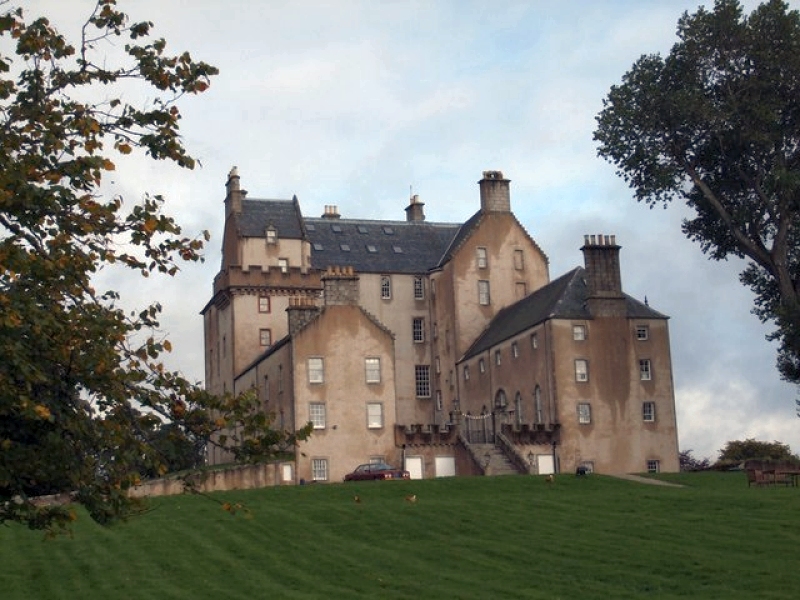
Motto: Stand Fast, Stand Sure
Historic Seat: Castle Grant
District: Strathspey
Associated Surnames: Gilroy, MacGilroy, Pratt, Suttie
Associated Tartans:
Early Grant Genealogy and History:
(Excerpt from "The Scottish Clans and Their Tartans", James Grant, 1906)
Despite the alleged Norman descent given in the book of "The Chiefs of Grant," James Robertson, F.S.A.1, is of a different opinion. "The origin of this clan," he asserts, "whose territory has always chiefly been in Strathspey, is purely Gaelic. As to the chiefs being of French descent, it may be dismissed, as the clan themselves have always from the most remote times, acknowledged they are of the same stock as the MacGregors."
Sir Laurence and Robert, "dicti Graunt," appear in 1258 witnesses to an agreement with Archibald, Bishop of Moray. The former was Sheriff of Inverness in the time of Alexander III (1249-58), and by marriage with the heiress of Glencharney acquired many lands, in short, the greater part of Strathspey.
John Grant of Inverallan and Robert Grant were taken prisoners at the battle of Dunbar2 in 1296, and in 1316 the former received a charter of lands of Inverallan, in which he was succeeded by his son Patrick of Stratherrick.
A Sir John Grant was taken prisoner at Halidon Hill3 in 1333, and in 1346 he obtained the keeping of the Castle at Darnaway. In 1366 "Johanne le Graunte" was witness to a charter in the Castle of Kildrummie. John Roy Grant was Sheriff of Inverness in 1434.
The first of the Grants of Freuchie was Duncan le Grant, 1434-85. He married Muriel, daughter of Malcolm, tenth chief of MacIntosh.
John Grant of Freuchie and Grant, a strenuous supporter of James IV, married in 1484 a daughter of Ogilvie of Deskford, and left three sons - James, his successor, ancestor of the Earls of Seafield; John, on whom he bestowed the Barony of Corrimony in 1509; and John Mhor (a natural son), to whom he gave Glenmorriston.
The approaching Reformation gave the Grants fresh opportunities of adding to their possessions. Thus in 1539, James, third Laird of Freuchie, became Baillie of the Abbey of Kinloss, and in 1569 his son John obtained a gift of the Abbey.
Sir James Grant of that Ilk, and his son Ludovick, eighth Laird of Freuchie, adhered to William II of Scotland, or Orange, and were with the clan in the fight at the Haughs of Cromdale4. In 1715 and 1745 he adhered to the House of Hanover, but Glenmorriston was "out" for the Stuarts, and fought in the whole campaign, which ended at Culloden5. In 1715 the strength of the clan was 800 men, as given by General Wade; in 1745, at 850 men. The marriage of Ludovick to Margaret, daughter of James, Earl of Seafield, brougth that title into the family in the person of her grandson, Sir Lewis Alexander Grant, in 1811.
There are three Baronets of the surname - Dalvey, 1688; Monymusk, 1705; and Ballindalloch (a MacPherson), 1838.
A line, now extinct, were the Grants of Dunlugus, one of whom became Governor of Silesia. Patrick Grant of Dunlugus died there in 1759, and was succeeded by his brother, John, Major of the Prussian Guards, and A.D.C.6 to the King.
After Culloden eighty-four of the Glenmorriston Grants, who laid down their arms in May, were transported to the Barbadoes, in violation of their terms of surrender, and sold as slaves. This branch wears a tartan different in sett from the rest of the clan.
A small obelisk at Corrimony marks the grave of the last Laird of that glen. He was an advocate, and author of "The Origin of the Gael," "essays on the Origin of Society," etc. It bears the following inscription:
"Here lies what was mortal of James Grant, Esq., the last of the Grants of Corrimony. Born 13th April 1743, died 12th September 1835."
Two regiments were raised out of the clan – "The Grant or Strathspey Fencibles" in 1793, and the old "97th" or "Strathspey Regiment" in the following year. The first was disbanded in 1799; the other was, after serving as marines on board of Lord Howe's fleet, drafted into other Highland regiments in 1795.
(End excerpt)
Next page: Clan Gunn
Footnotes:
1 F.S.A.: Fellow of the Society of Antiquaries. Read about the Society of Antiquaries at Wikipedia.
2 The Battle of Dunbar (1296): The battle of Dunbar was fought on 27 April 1296 near Dunbar, Scotland, and was a decisive English victory over Scotland in the the First War of Scottish Independence. Read more about the Battle of Dunbar (1296) at Wikipedia.
3 The Battle of Halidon Hill (1333): The Battle of Halidon Hill was fought on 19 July 1333 during the Second War of Scottish Independence between Scottish forces led by Sir Archibald Douglas and the English forces of King Edward III of England, near Berwick, a disputed territory in the borderlands between England and Scotland. Read more about the Battle of Halidon Hill at Wikipedia.
4 The Battle of Cromdale (1690): The Battle of Cromdale was fought between General Thomas Buchan, commander-in-chief of the Jacobite forces in Scotland, and a larger government force under Sir Thomas Livingston, commander of the garrison at Inverness. It took place on 30 April and 1 May, 1690 on a hillside near the village of Cromdale in Inverness-shire. Read more about the Battle of Cromdale at Wikipedia.
5 The Battle of Culloden (1746): The Battle of Culloden was fought on 16 April 1746, on Drummossie Moor, near Culloden, east of Inverness Scotland, between Scottish forces led by Charles Edward Stuart (Bonnie Prince Charlie) and English forces led by William Augustus, Duke of Cumberland. It was the final confrontation of the Jacobite rising of 1745. Read more about the Battle of Culloden at Wikipedia.
6 A.D.C.: Aide-de-camp, personal assistant or secretary to a person of high rank.
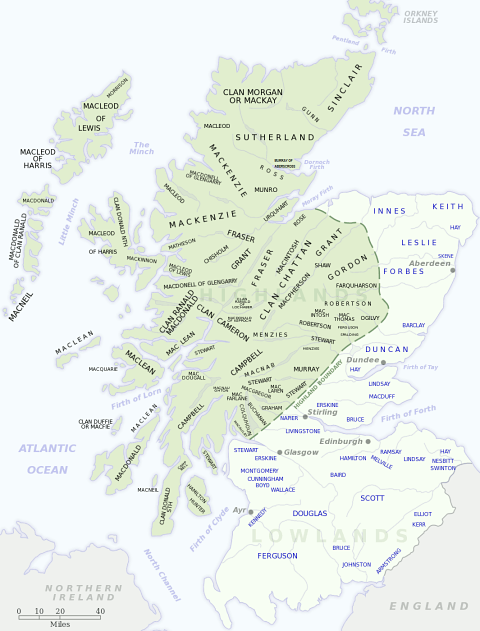
Distribution of Scottish clans and families
View larger map at Wikimedia Commons
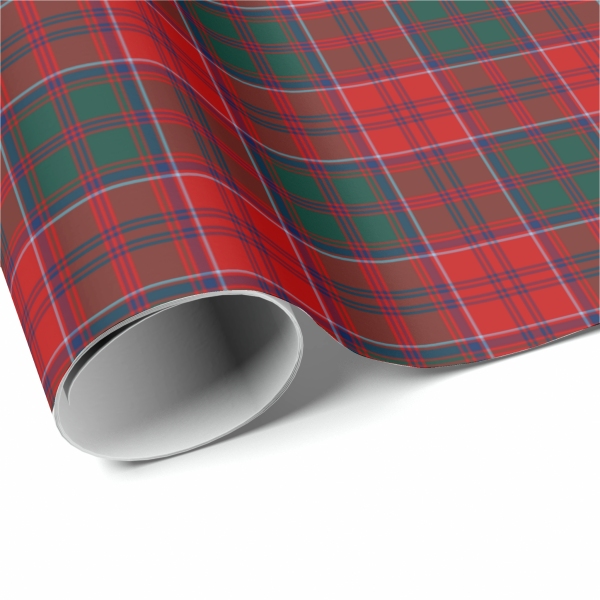
Browse the Clan Grant Tartan Collection with home decor, personal accessories, crafting, paper products, and more.
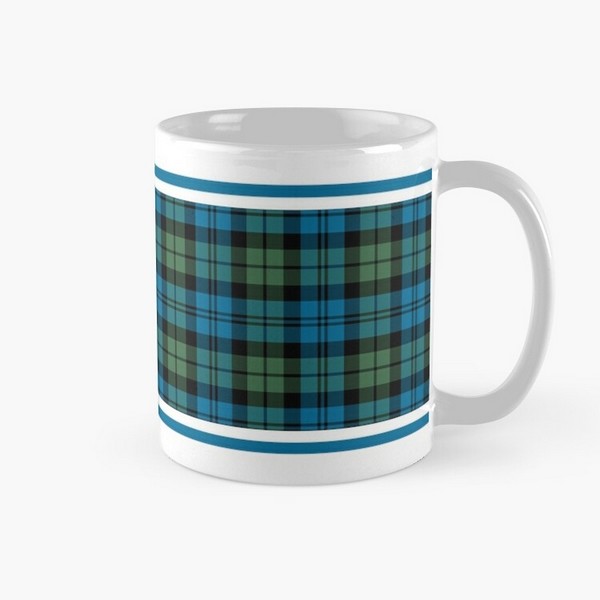
Browse the Strathspey District Tartan Collection with clothing, home decor, accessories, electronics cases, and more.
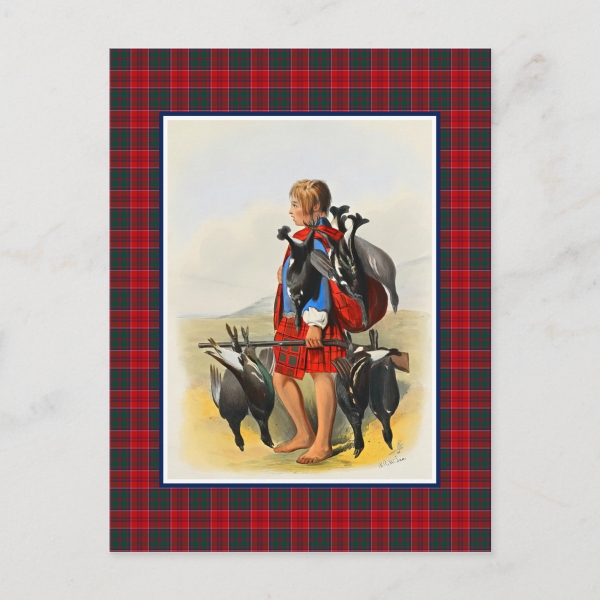
Clan Grant Postcard: Digitally cleaned and enhanced vintage illustration with tartan border.